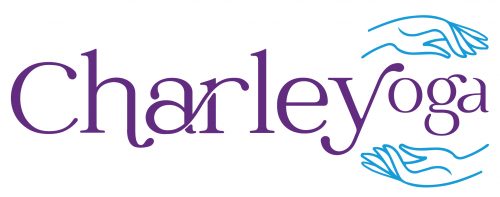 Author: Charley Hickey is a practicing yoga therapist and senior yoga teacher who runs group and private yoga classes in Applecross & Fremantle, Perth. She also runs specialised yoga workshops for yoga students & yoga teachers.
Author: Charley Hickey is a practicing yoga therapist and senior yoga teacher who runs group and private yoga classes in Applecross & Fremantle, Perth. She also runs specialised yoga workshops for yoga students & yoga teachers.
Ok, so perhaps the photo & caption are a little extreme and/or provocative but I do like to get your attention!
I was talking to some long term yoga students at a tea break during one of our yoga workshops. I find it amusing how the most interesting discussions seem to happen in the tea breaks and not during the workshop itself! We were discussing what was the thing about yoga that we liked the best or found helped us the most in our lives. The unanimous decision was “breathing” which I found quite surprising. Comments ranged from, “I just love coming to class and breathing” and “Thank you so much for teaching me to breathe!”
I said something to the effect of “Hang on a minute, you’re telling me that you come to your yoga class and pay me each week to do something that you are already doing? You do realise that you are breathing all the time right; you don’t even have to think about it as its part of your autonomic nervous system (the part that is not consciously directed)? I feel bad now; maybe I’ve been ripping you off all these years and owe you some money back!” A mixture of humour interspersed with deep conversation ensued about the topic of the breath. This was fantastic but I really felt I couldn’t accept responsibility as a teacher for such a natural process, or could I?
It prompted me to think about it a little more deeply afterwards. If everyone is already breathing all the time and they are breathing when they arrive at class and they are breathing when they leave class, then what have I really done as a teacher? I realised it is awareness of the breath that changes, that’s the secret, that’s what the teacher does. We simply suggest that you bring attention to your breath; however it is in that moment. The breath that is already happening in the body, the breath that is always there, the breath that is always ready to support you and reflect back to you what is happening. The breath is like a mirror for whatever is happening in our lives in that moment. It’s a mirror for the state of our physical body, our emotions and our general mind state. What’s so great is that this mirror is like two way glass. There is a cause and effect relationship that can be used to our advantage. For example, when we are stressed out the breath becomes shallow and this can cause blood pressure to increase and feelings of anxiety to increase – conversely if we focus on the breath and start breathing into the belly, this can slow the breath, lower blood pressure and calm the central nervous system. Although the breath is autonomic, there is also an element to the breath that can be manipulated through the practice of prananyama which I like to think of as “playing with the breath”. “Playing” is a great word as it keeps the practice light-hearted and free from stress or pressure to do it perfectly. It doesn’t have to be serious; you could even treat the whole process as a game, why not?!
Here are few yoga breathing practice tips (wow, I still feel a little bit like I am scamming you!)
- Ask yourself this question ~ “How do I know that I am breathing?”
- Focus on whatever it is you answered for point 1
- Start to notice what your breath is like; observe it without trying to change it in any way. Is it deep or shallow? Is it slow or fast? Rough or smooth? etc….
- Notice if the breath naturally adjusts itself or changes in any way whilst you are observing it.
- Stay with your breath, moment to moment, breath to breath…..
- Notice that you mind wanders from time to time (this is a natural process so don’t try to stop it!)
- Bring your mind back to your breath each time that you notice it is wandering (this may be many times)
- Repeat, repeat, repeat, remember, it’s just a game!
Once you’ve done that for a bit, then you might move into a specific pranayama (playing with the breath) that might be samma vritti pranayama, nadi shodana pranayama or one of numerous other yogic pranayamas (yoga breathing practice). Some of these we teach in group classes, others are a bit stronger and I prefer to teach these one on one. Whichever way, please remember when you practice that it’s all just a game!
If you’d like some homework, see if you could notice that you are breathing for just one breath a day – one breath, that’s all, just see what it’s like to do that once a day for one breath.
Follow our Facebook page here http://www.facebook.com/charleyoga to receive notifications of our latest blog posts, special offers and updates about our happenings.

